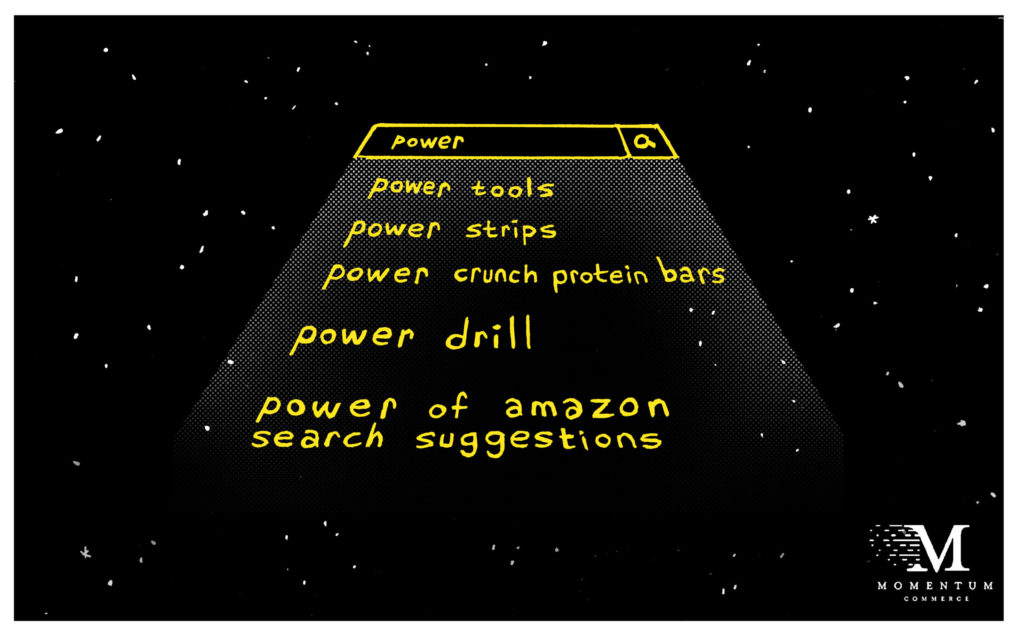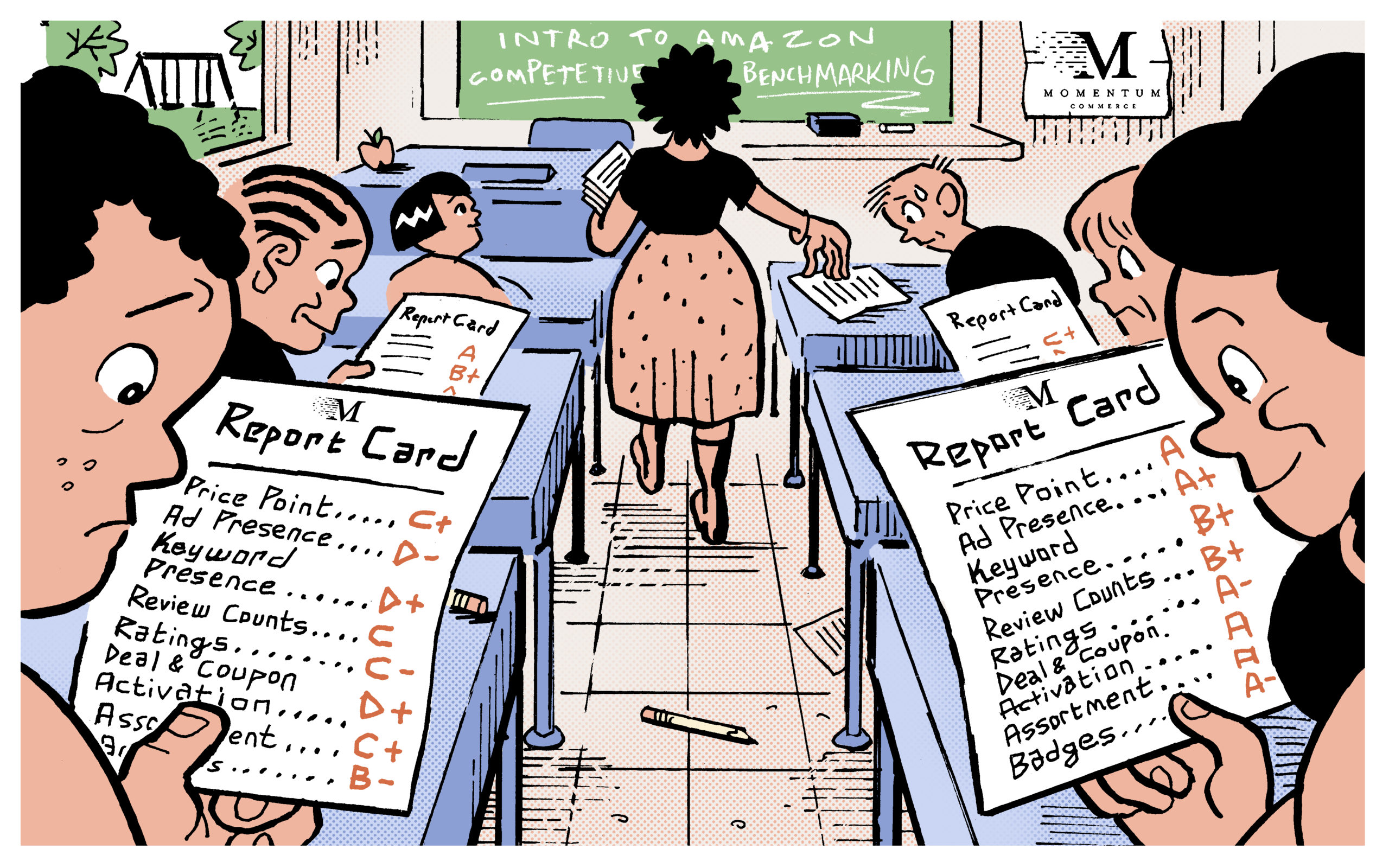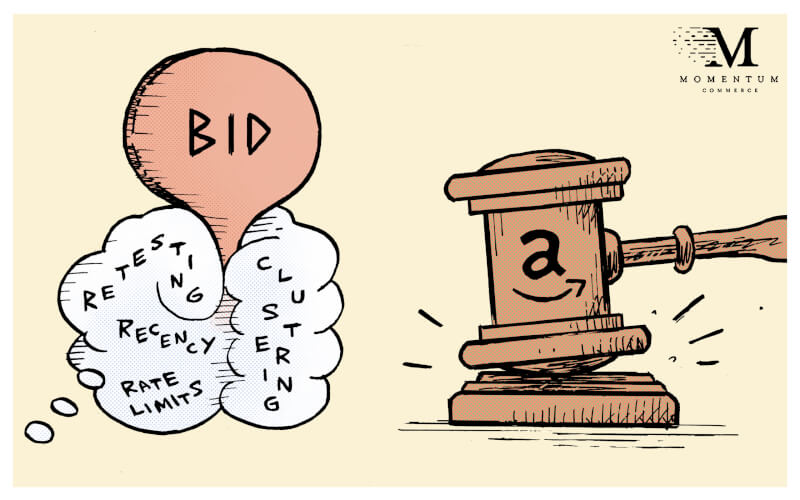
Stats: Category-by-Category Competition on Amazon
Whenever brands begin selling in a new category on Amazon – whether it’s their first category or just an expansion of existing business – a common question is the level of competition in that category. With new entrants, advertising is a must to jump start sales velocity, but the level of existing competition can help frame how aggressive the brand will need to be not just during launch, but also as the product matures. Momentum Commerce put together a methodology around defensive vs. offensive advertising to help quantify the level of competition across Amazon categories.
The ‘defensive advertising’ statistic relates to the percentage of ad placements shown in the first 20 results where the product shown overlaps with an ASIN of a matching brand in the top 10 organic slots. This tells you if the brands organically ranking at the top of search are advertising heavily to stay there, whether with the same product ranking organically, or with another complimentary product from their catalog.
If that number is high, it means the top of search is very competitive, and you will need to spend more to stay dominant. Conversely, if that number is low, it means there is more organic momentum and the top of search advertising slots will be less competitive. In this way, a single percentage statistic acts as a good way to research how much you’d need to spend to get a top spot, and whether it will be relatively easy, or difficult, to stay competitive.
After categorizing the top million search terms on Amazon based on the products appearing in the SERP over the month of January 2022, there are sizable differences in defensive advertising activity across top-level category search terms.
Key Observations
- Defensive advertising rates help quantify the overall competitiveness of Amazon categories via search
- Shows the percentage of ad placements shown in the first 20 results where the product shown overlaps with an ASIN of a matching brand in the top 10 organic slots
- Different Amazon categories demonstrated widely varying defensive advertising rates in January 2022
- Music, Books, electronic content, have the lowest defensive ad rates (50% or less)
- Software the highest (82%)
- Higher average price of ASINs in a given category are correlated with higher defensive ad rates
- Searches associated with deeper sub-categories also have higher defensive ad rates on average, compared to top-level categories
- Using these statistics, along with more targeted analysis of defensive metrics of specific relevant search terms, can help illuminate expected advertising costs both during and after a product launch on Amazon
As seen below, lower defensive rates are associated with Music, Books, and electronic content. Sales in these categories tend to be driven by organic activity, and searches are largely focused solely on individual products rather than brands, minimizing the need for defensive advertising on the SERP. Meanwhile, ad defense rates are highest in Software by a sizable margin. Searches in this top level category are geared towards highly competitive products with a small selection of major brands like tax preparation, anti-virus, and business software, necessitating defensive advertising by even top organic players.
| Category | Ad Defense Rate |
| Software | 82% |
| Musical Instruments | 68% |
| Arts, Crafts & Sewing | 67% |
| Industrial & Scientific | 67% |
| Office Products | 66% |
| Pet Supplies | 66% |
| Electronics | 65% |
| Sports & Outdoors | 64% |
| Tools & Home Improvement | 64% |
| Baby Products | 64% |
| Automotive | 64% |
| Patio, Lawn & Garden | 63% |
| Health & Household | 63% |
| Beauty & Personal Care | 62% |
| Video Games | 62% |
| Cell Phones & Accessories | 62% |
| Everything Else | 60% |
| Grocery & Gourmet Food | 60% |
| Clothing, Shoes & Jewelry | 58% |
| Home & Kitchen | 55% |
| Toys & Games | 54% |
| Appliances | 53% |
| Movies & TV | 51% |
| Books | 49% |
| Prime Video | 49% |
| Gift Cards | 49% |
| Kindle Store | 44% |
| Apps & Games | 43% |
| Digital Music | 39% |
| CDs & Vinyl | 31% |
| Magazine Subscriptions | 26% |
Looking more broadly, as the average price of ASINs in a given category or sub-category rise, there is a positive correlation with defensive advertising rates.

This confirms the expectation that as the potential revenue of a given sale increases, it’s more worthwhile for brands to spend on ads defensively – even if that cuts into the profit margin slightly – to reduce the likelihood of that sale going to a competitor. This also means for brands moving into Amazon categories with higher average price points, the expectation should be that you will be spending more on ads. Before undertaking the launch, there should be a clear plan in place for how this will be supported, both monetarily and strategically, over the short and long term.
Those defensive measures are particularly important for terms associated with deeper category trees (e.g. Toys & Games>Puzzles>Brain Teasers>Assembly & Disentanglement Puzzles). When consumers search for these terms, they are naturally more specific, with consumers likely much further along in a potential purchase decision. Brands have responded with higher average defensive advertising rates.
| Category Depth | Average Defensive Ad Rate |
| 1 | 57% |
| 2 | 63% |
| 3 | 65% |
| 4 | 67% |
Defensive advertising rates should be incorporated into your product launch planning on Amazon, as a way to better understand the level of competition your product will be up against on the search page itself. Aside from these category-wide statistics, something Momentum Commerce has undertaken for our clients is examining these rates across a discrete set of relevant search terms for an individual product. This illuminates specific terms where there is less ‘entrenched’ competition, representing better opportunities for offensive tactics during launch.
We’ll be continuing to discuss these more advanced methods of measuring the marketplace in future, building off of concepts we discussed in prior posts around our aggregate analyses, and executive guide to Amazon success.




